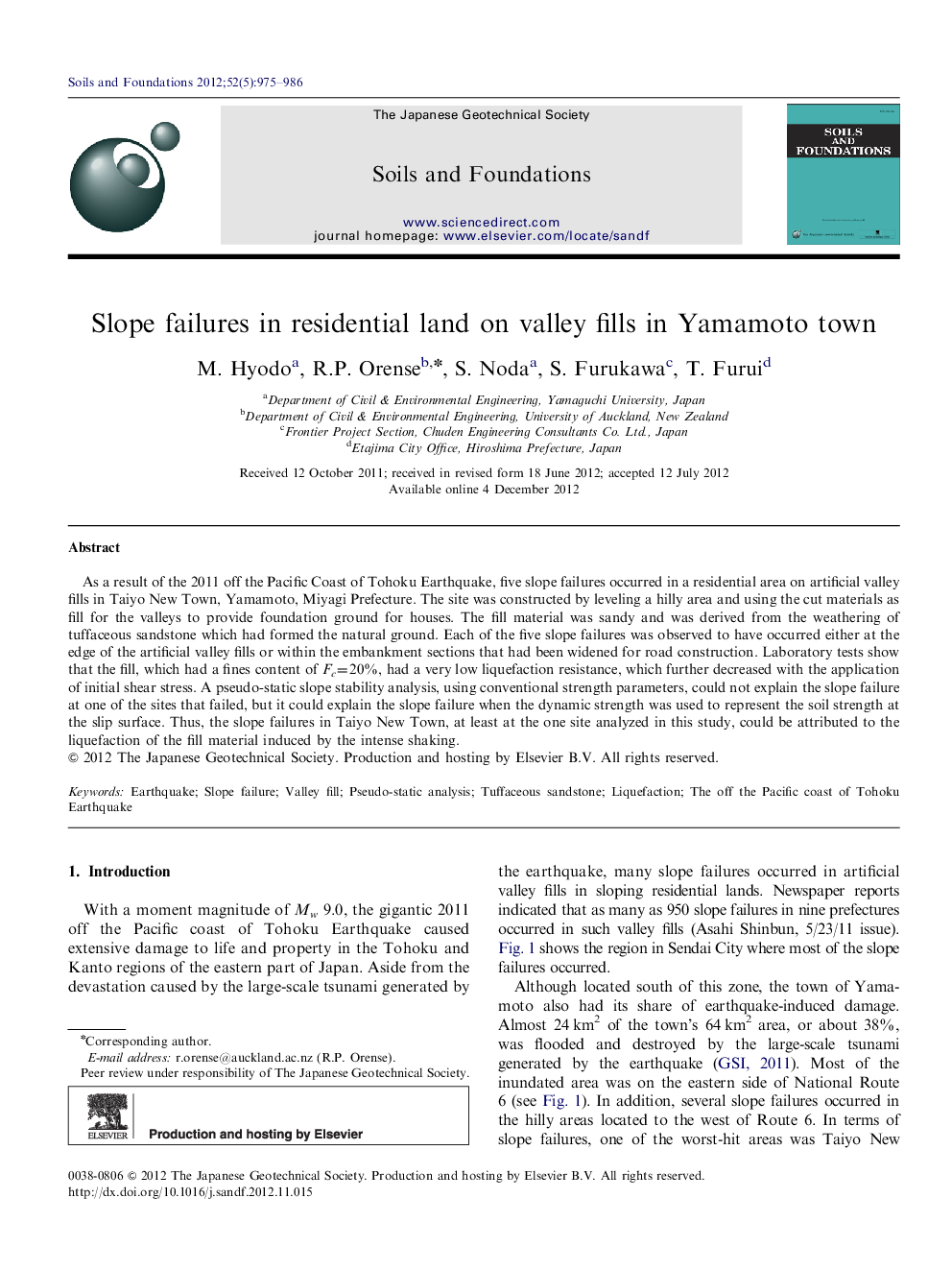| Article ID | Journal | Published Year | Pages | File Type |
|---|---|---|---|---|
| 10295691 | Soils and Foundations | 2012 | 12 Pages |
Abstract
As a result of the 2011 off the Pacific Coast of Tohoku Earthquake, five slope failures occurred in a residential area on artificial valley fills in Taiyo New Town, Yamamoto, Miyagi Prefecture. The site was constructed by leveling a hilly area and using the cut materials as fill for the valleys to provide foundation ground for houses. The fill material was sandy and was derived from the weathering of tuffaceous sandstone which had formed the natural ground. Each of the five slope failures was observed to have occurred either at the edge of the artificial valley fills or within the embankment sections that had been widened for road construction. Laboratory tests show that the fill, which had a fines content of Fc=20%, had a very low liquefaction resistance, which further decreased with the application of initial shear stress. A pseudo-static slope stability analysis, using conventional strength parameters, could not explain the slope failure at one of the sites that failed, but it could explain the slope failure when the dynamic strength was used to represent the soil strength at the slip surface. Thus, the slope failures in Taiyo New Town, at least at the one site analyzed in this study, could be attributed to the liquefaction of the fill material induced by the intense shaking.
Related Topics
Physical Sciences and Engineering
Earth and Planetary Sciences
Geotechnical Engineering and Engineering Geology
Authors
M. Hyodo, R.P. Orense, S. Noda, S. Furukawa, T. Furui,
